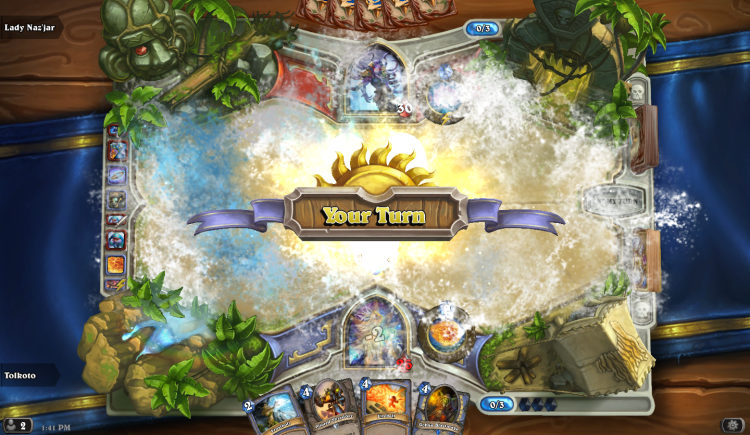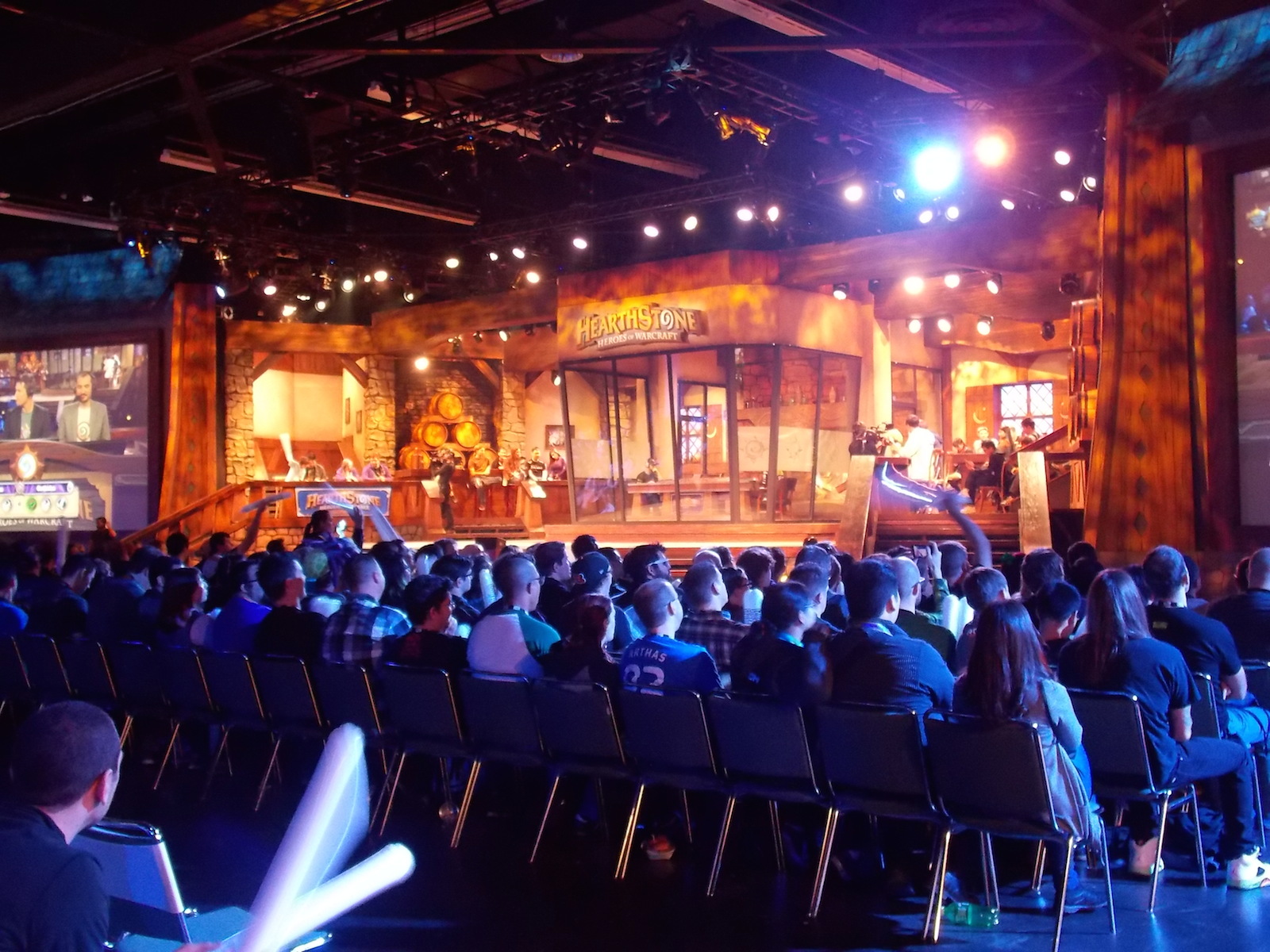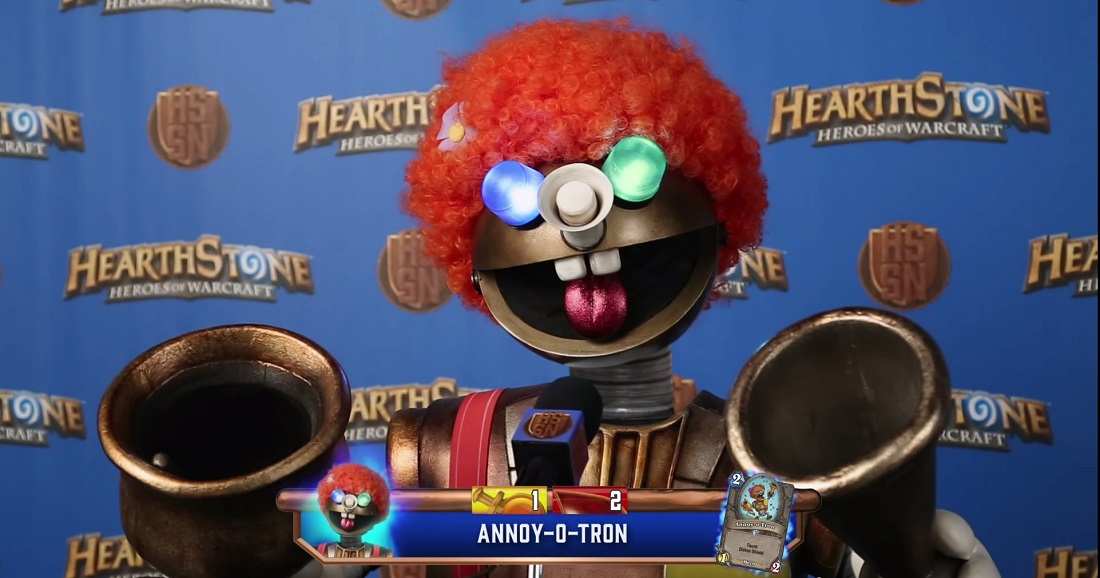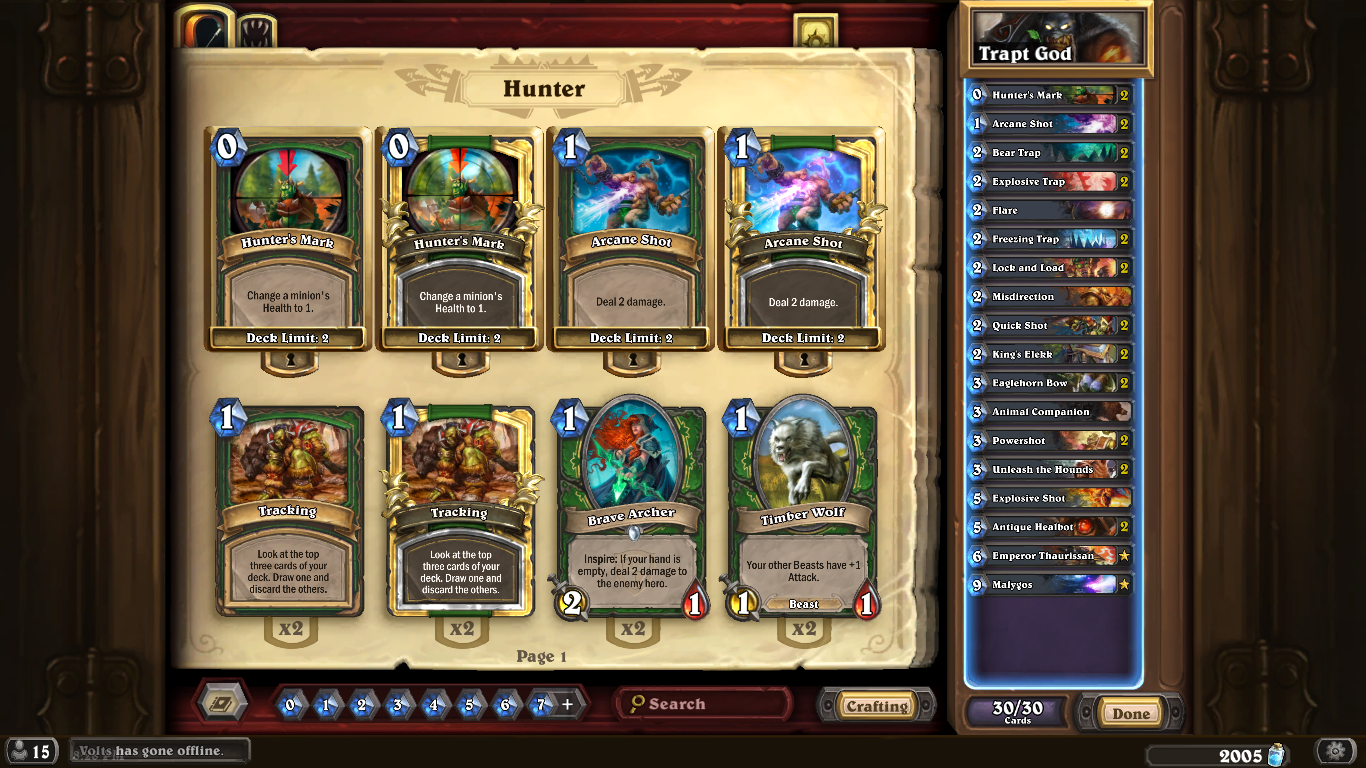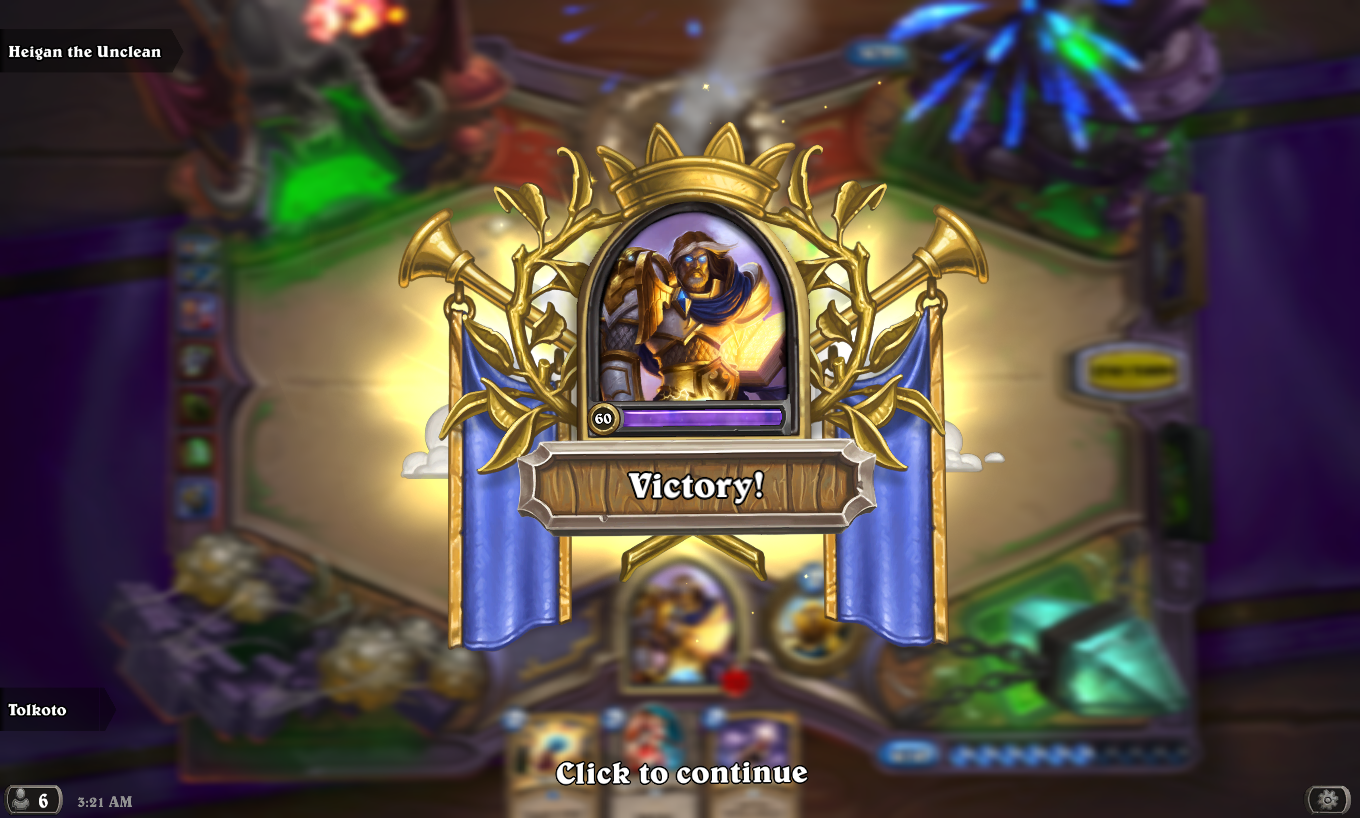Hearthstone: Heroes of Warcraft is preparing for its biggest changes ever.
Last week, Blizzard Entertainment announced that its splitting the traditional 1-on-1 competition mode of the digital card games into two different formats: Standard and Wild. Hearthstone makes $20 million every month, according to research firm SuperData, and it is the market leader in the $1.2 billion card game industry. Joost van Dreunen, analyst at market research firm SuperData Research, has told GamesBeat that Hearthstone has made $500 million since its launch in 2014, making up almost half of the card-game market. It’s also the fourth most popular esport, behind League of Legends, Dota 2, and Counter-Strike: Global Offensive.
This shake-up could make it ever more profitable.
While Wild will allow players to use every card in the game, Standard will have a more specific, fluxuating selection. When we first see Standard, cards from Hearthstone’s first expansion, Goblins vs. Gnomes, and its first adventure, Naxxramas, won’t be legal. This is a scary but necessary change for Hearthstone. While adding new cards keeps players engaged, it can scare off potential newcomers who feel like they can never catch up.
GamesBeat talked with Hearthstone lead designer Ben Brode and producer Yong Woo about the changes coming to Blizzard’s card game, how they plan to support Wild mode, and the reaction from players to all these announcements. We also talked about if they’ll budge on the idea of adding new classes and an in-game replay system.
GamesBeat: How long have you guys been mulling over the idea of Standard mode?
Ben Brode: We’ve at least been talking about it since way before we shipped Hearthstone. It’s one of those things where, when you look at the idea of releasing more content, which is super-exciting — it’s just extrapolating that to infinity.
We just knew that we would eventually be faced with the problem of Hearthstone becoming inaccessible to new players and being stuck with our ability to shake up the metagame as the number of cards in the environment increased. So we were always mulling over ways. We jumped into specifics probably over a year ago.
GamesBeat: Is this at all a response to how players received The Grand Tournament, Hearthstone’s second and most recent expansion? You didn’t see as many cards from that set making it into the metagame as from Goblins and Gnomes. The new mechanics, Inspire and Joust, didn’t take off.
Yong Woo: It’s something we’ve been thinking about for a very long time, like he said, even before we shipped. The possibility of doing something like this to solve a problem we knew we’d run into. It wasn’t just a reaction specifically to GT.
Brode: The thing about Grand Tournament is that a lot of cards see play, but most of those are class specific. A lot of the cards that people think are iconic from Goblins and Gnomes are neutral cards that you play in lots of decks. It was a conscious decision for us to push a lot of the power of the set into the classes. It feels very different. GT made a splash in the metagame, but just in a different way, spread among all the classes.
GamesBeat: When designing new cards now, will you focus on making new mechanics like Inspire and Discover? Or is it going to be a bit more focused on filling holes that retired cards leave behind?
Brode: We have some exciting new cards and mechanics. When we think about holes, you’re talking about tools players need to deal with specific meta environments. Like if this one deck or archetype becomes very powerful, how do you deal with it? I’m gonna need whatever card.
It’s important in general for environments to contain answers for players to solve the metagame. But it’s easy for us to do both of those things — print cards that are answers for problems that players perceive, but also make really exciting cards that will shake up the meta.
GamesBeat: Why make the adventure and expansion cards that become retired impossible to purchase completely? What about people who want to play the adventures just because they have interesting A.I. encounters?
Brode: It’s tough. We want to make sure that new players are playing a format that’s accessible to them. Putting new players into Standard, not tempting them with new things that look cool but will dump them in a format that they should maybe wait to experience. It’s tough. It’s something we got a lot of feedback about. We’re thinking about it.
Woo: We’ve put a lot of time and effort into making optimum missions for Naxxramas. We enjoy playing them, too. It’s not like we’re going to be taking that content and erasing it from every hard drive we have over there. It’s going to be in our portfolio, and we’ll think about what we want to do with that content in the future.
GamesBeat: Do you worry at all about how some of those cards can only be made via arcane dust, a currency players earn from destroying unwanted cards, now? Is that going to be a big barrier to entry for Wild?
Brode: Specifically, Naxxramas cards will be more accessible. Cards like Mad Scientist, before you’ve had to fight several wings of Naxxramas to get access to. But they’re common cards. They’ll be craftable with dust. If you just want specific cards for your Wild premade deck, you can just craft a Mad Scientist. You don’t have to worry about getting all of Naxxramas for that.
Wild is going to be a format with many, many cards eventually. In some ways, there’s no way to make it fully accessible for brand new players. We want to push those players into Standard. But for players who are excited about Wild, you only need 30 cards for a deck. You can craft the ones you need. But we’re really excited about both formats being fun for different types of players to play.
GamesBeat: When you’re designing future cards, I take it you’re not going to consider retired cards that are only playable in Wild when you’re thinking about combos in the meta, right?
Brode: We do care about balance in both formats. If somehow balance deteriorates in Wild, to the point where we have to come in and take action, we will. But we also have more freedom in that Standard doesn’t have to compete with all the other cards ever made. It’s a difficult thing to balance. We’ll have to tread carefully. But we don’t want to end up in a world where Wild is the kind of format where people are doing one-turn kills on turn two. We’d step in and change that. It’s just a different amount of tolerance. There will be a different expectation for Wild than Standard.
Woo: Wild is a game mode inside of Hearthstone that we’ll support moving forward. We believe in people playing Hearthstone the way they want to play. Already you have Ranked mode, Casual, the Arena, Tavern Brawl. Wild will just be joining that as something that’s in the game we love to play and we’ll continue to support it.
GamesBeat: Standard mode is the official mode for tournaments going forward. You’ll only be showcasing the top players from Standard. Do you worry that this is a sign that you aren’t backing Wild mode as much?
Brode: Some players have pointed to that as a reason why Wild won’t be a thing. I think that’s unfortunate. We believe that Wild will be a thing. If, for some reason, it’s not, we’ll make changes to Wild so that it is a thing. But yeah. The important message is that Blizzard does care about both of these formats and we’ll continue to look at them.
Woo: We’ll be really surprised if, over the next year, there aren’t Wild tournaments out there. Obviously, whatever is exciting for players to engage in and watch is what people are going to want to run tournaments with. In my mind, if we have tournaments for both Standard and Wild happening in the community, that’ll be awesome.
GamesBeat: Going back to those retired cards — I don’t know if that’s really the right word for it, but the cards that become only playable in Wild, will they give as much dust when they’re disenchanted as an active card?
Brode: Yeah, the dust crafting and disenchant prices will be the same across all cards in the game.
GamesBeat: Does this all make the idea of adding new classes more possible? Before you would have to add so many cards at once and there would be so much catch-up for any new classes.
Brode: I don’t know? We haven’t talked much about that. We’re still not really thinking about new classes. There’s tons of exciting things we’re exploring, and I don’t think classes are part of that. It’s interesting, but we haven’t talked a lot about it just yet.
GamesBeat: You said you’re going to look back at the basic, classic cards and see what adjustments you need to make. Should we be expecting a lot of changes? Or maybe just a bit here and there?
Woo: It depends on how you define a lot or a little. [Laughs] This is going to be the most significant number of changes we’ve ever made to Hearthstone in one go. We still want to be very conservative with changes. The game is better when the cards aren’t changing underneath you very often.
But we felt like this was a great opportunity, a huge shakeup here, to make some changes we’ve been considering for a long time. Things that will help make sure Standard is going to be successful as a new format. And some other changes that are just good for the game in general.
GamesBeat: With the new Standard format, we know classic cards are evergreen in new a way that maybe the expansions and adventures are not. Will pricing change to reflect that at all?
Brode: We don’t have any plans to change pricing right now.
GamesBeat: Talking about retired cards again, is there any chance we’d see retired cards return in future sets?
Brode: It’s possible. We don’t have any plans for that. It’s something we’d have to talk about and consider.
GamesBeat: Along the same lines, is there any chance we’d see a retired card added to the basic set? The example I’m thinking of is Reno Jackson, where this one card has introduced so many different new deck types. It’s hard to imagine that card going away and losing all those sets.
Brode: That’s part of the appeal of Wild. We’ll have all of those experiences there. If you’re really attached to a deck in the Standard format, you can play it in Wild. But part of the allure of Standard is that things are changing all the time. If Reno was always in Standard, it would feel a little bit more like Wild.
Standard is really for players who want a dynamic metagame, who want things to be changing constantly. There will be new tools to deal with aggro decks or new unique decks that are as exciting as Reno was. It depends. If you’re a player who really loves Reno, really loves those decks, Wild might be awesome for you. But if you’re excited about what’s next, what’s after Reno, then Standard might allow those types of decks to shine.
GamesBeat: I’m sure you guys knew that Dr. Boom and Piloted Shredder would be popular, powerful cards. Are you surprised that they showed up in a majority of decks, though?
Brode: We intentionally pushed Piloted Shredder to be quite strong. It can do some great things to the game. But no matter what we do, because certain decks are just going to want to play the highest value 4-cost minion — this is going to be a thing that happens. This is one of the things that makes Standard exciting. Those types of cards don’t get a chokehold on that mana slot for a super long time, because eventually new cards enter into the format. So yeah, we expected that this would be the case, and that’s one of the reasons we’re excited about Standard.
GamesBeat: Was there ever any thought about nerfing Dr. Boom or something like that? Or was Standard something you had in the back of your mind that would eventually solve that problem?
Brode: Nerfing is — it can do some good things, and it can do some harm. What I think is dangerous is to imagine that we could just make Hearthstone balanced if we just nerfed this one tier of cards. No matter what, there will be a best card. There will be a best deck. If we nerf Dr. Boom, some other card will be the best card. Then we nerf that one and we end up in a cycle. It creates a lot of churn and disruption in the environment.
Now, you may want more shakeup in the metagame. But I think it’s better to do that as part of the cadence of content releases than a cycle of always nerfing what’s best every two weeks. Dr. Boom is very powerful. Maybe it’s unfortunate that it was a neutral card that sees play in so many decks. But I don’t think it’s the kind of card we should be nerfing.
GamesBeat: Maybe those really powerful cards are going to be more class-specific down the line? We saw that already in The Grand Tournament.
Brode: Yeah, I think so.
GamesBeat: What cards from Goblins and Gnomes and Naxxramas will you guys miss most when playing around in the new Standard meta?
Woo: I always felt like Gnomish Experimenter never got to have its moment in the spotlight. I’ve been trying to make that card work for a long time. I’m going to continue to try to make it work in Wild and all the Tavern Brawls that are coming out.
It’s hard to talk about what cards we’re going to miss, because they aren’t really going anywhere. It’s really just talking about what cards won’t be in Standard that we’ll keep playing around with. For me it’ll be the Gnomish Experimenter.
Brode: Yeah. It’s tough to think about Standard, really, because what you guys haven’t seen yet is the new expansion set we’re working on, that will launch when Standard does. It’s going to be a pretty big shakeup at that time.
GamesBeat: Is there any time frame at all for when that’s happening?
Brode: We’re talking about spring, but beyond that we haven’t announced any dates.
GamesBeat: Has there been any thought at all about a replay mode being added to the game?
Brode: We don’t have anything to announce about that right now, but we’re always looking into new things to add to the game.
GamesBeat: Thinking about new cards again, what do you guys prefer to do? The Warcraft universe is so big now, with so many characters, but at the same time a lot of cards are just inventing characters. Is there a method you guys prefer for choosing between those two approaches, or does it depend on the card?
Brode: A mix of both is really exciting. Finley and Elise and Reno, these characters have turned out really awesome. But it’s also super fun to see characters you know and remember from Warcraft, like Hogger and Mukla. We try to have a mix of that.
Woo: We like to think of it as building the universe together with the other Warcraft team. Obviously, there are going to be characters we share, but we’re really excited to introduce new ones.
GamesBeat: Were you anxious about making the announcement of Standard mode? Did you have any worries about how the community would react?
Brode: Change is scary. This is the biggest change that will ever happen to Hearthstone, probably. We think that brand new players are going to be happy with a new mode they can jump into without having to collect every card ever made. We think players will love a dynamic environment that’s shaking up more frequently. We think players who want to play with all their cards will love Wild. But you never know how players will respond.
We did some things that are a little bit more controversial. Whenever this kind of big shakeup happens, we worry about how people will perceive it. But so far people seem to be excited. There’s a lot of great feedback coming out of this. Mostly we’re waiting for people to try it and give us feedback once they get it in their hands.
VentureBeat's mission is to be a digital town square for technical decision-makers to gain knowledge about transformative enterprise technology and transact. Learn More
